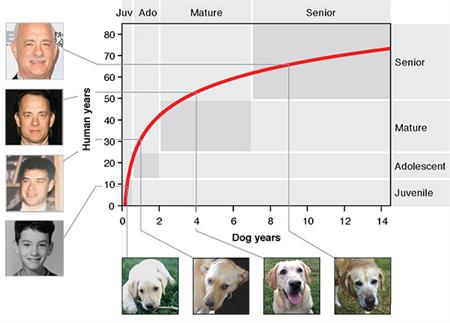Scientists Developed A Better Than “Multiply By 7” Method To Calculate The Age Of Dogs
Tags: opinion

One of the biggest myths that has permeated through the stitches of time is that you can find out how old your dog is in human years by multiplying their age with 7. Now, while that was perfectly fine a few years back, calculating the age of your dog just got a lot more accurate now.
The School of Medicine at the University of San Diego throws this theory out of the window, as they established that the best way to check the age of your dog in human years would be to check the methyl groups as they get older. Both dogs and humans have rapidly changing methyl groups as they age, and the change is not as linear as 1:7 would have us believe.
Read: These Four Heroic Boys Saved This Abandoned Dog Who Was Tied With A Bungee Cord
A new system published in Cell Systems propagates a Methylation-based formula. This can be extremely useful to vets whilst evaluating anti-aging interventions. Trey Ideker, the lead author of this study, mentioned that the properties of this Methylation-based formula would actually help people be up to date on the anti-aging products that they use. If one were to check their methyl groups as they progressively got older, things would get a lot simpler for them to understand.
Hey, are you enjoying our content? Want to see also some thought-provoking videos from Truth Theory? We are on YouTube, make sure you subscribe to our YouTube channel, click HERE
This formula brings forward a new ‘epigenetic clock’, one that would allow scientists to determine the age of a particular cell, tissue, or body- based on the changing or altering genes present with the passage of time.
But where do dogs feature in this study? Well, it was co-author Wang’s idea to bring dogs to the forefront, as research with humans could get dreary after some time. Amongst the many canine researchers that were brought into the study, it was Elaine Ostrander, Ph.D., chief of the Cancer Genetics and Comparative Genomics Branch at the National Human Genome Research Institute, who provided the breakthrough after bringing about blood samples of 105 labradors.

Image: Cell Press
Considering dogs spend most of their lives around humans and are exposed to the same form of care- it is extremely important that such a research is conducted on them. For, it will help scientists and vets get ahead of the outdated 1:7 theory, and actually conduct treatment that would make a difference to your pet.
The research provided some very interesting results- the age of your dog in human years is definitely not 1:7 compared to humans. In fact, the age ratio between dogs and humans is extremely swift in the beginning- 1 dog year = 30 human years, 4 dog years= 52 human years. But after the age of 7, the ratio keeps getting larger, as their aging loses speed.
Read: Dogs Should Get To Keep The Ears And Tails They Are Born With
Most of the researchers on this project, especially Ideker, are agreeing to this theory. After all, if a 9-month-old dog can bear puppies, the theory of 1:7 obviously wasn’t true. This has led to people in the research look at their dogs almost reverentially- realizing that their dogs might not be as young as they are thinking them to be.
The next course of action would be to see if they could use this Methylation process on dogs in a way that would make them more responsive to anti-aging solutions. When they have been able to correctly determine the age of your dog in human years, this doesn’t seem that far away.
Image Credit: Olena Mykhailenko
Leave Comment: